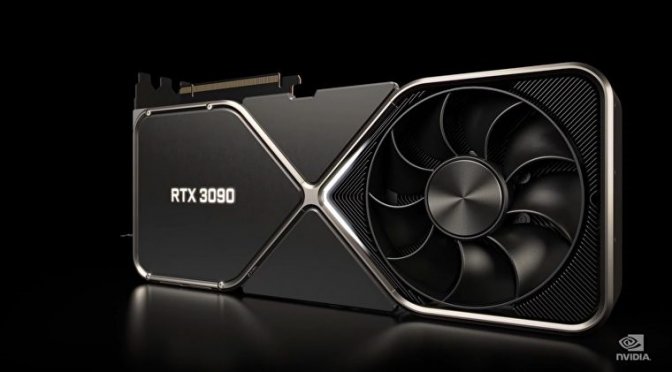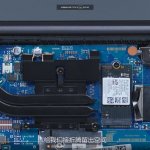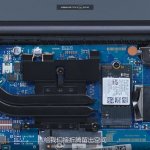Ever wondered if you can get desktop-level gaming performance from a laptop? Laptop gaming notebooks have gained popularity in recent years as more gamers prefer to play games at their own convenience and place. However, laptop integrated gaming GPUs usually have been limited and constrained by power and thermal limits, as the Mobile variant has been unable to match the performance of a desktop gaming GPU.
So to circumvent this drawback we can connect an external desktop GPU/eGPU to any Laptop model which supports the Thunderbolt 3 interface. An eGPU is a separate device that houses a graphics card.
This device then connects to a laptop via Thunderbolt 3, and the laptop is then able to use the eGPU instead of its own onboard graphics to run games as well as other graphics-intensive programs.
The market for these devices is ever growing with many people seeing a lightweight laptop plus an eGPU as their preferred setup for not just gaming, but other tasks as well such as 3D modeling, animation, editing and computer-aided design/CAD.
Here is an example of a Thunderbolt 3 USB 3.0 External Graphics Card Dock from ASUS.
One of the downsides to using an eGPU is that even though Thunderbolt 3 provides the fastest connection right now, you still won’t get quite as much performance as you would if the GPU was housed internally. The loss in performance is said to be around 10-15% which isn’t too concerning, but it is still something worth mentioning in this context.
But what if you don’t want to buy an external graphics card dock, and want to use your current desktop GPU instead for gaming? Kosin which is a Chinese subsidiary of Lenovo has the answer. Kosin has demonstrated that there is another way to make a desktop GPU run on a Laptop.
Kosin employee shared a video showcasing how he managed to run an RTX 3090 desktop GPU off a notebook’s NVMe M.2 slot, coming via PC Watch. Yes, you heard that correct, via the NVMe M.2 slot! Kosin used a Xiaoxin Air 14 laptop with a Ryzen 5 4600U processor for this demonstration.
Kosin demonstrated how powerful and useful this type of connector can be, although going for this procedure is not advisable for normal users. In order to connect the desktop GPU to the laptop, Kosin removed the internal NVMe M.2 SSD and installed an “adapter cable” from M.2 to PCIe.
This allowed the modder, who also modified the laptop chassis to allow the cable to escape and run outside of the laptop’s chassis, to connect an RTX 3090 GPU to the laptop. The GPU was later recognized by the system without any issues.
So basically the laptop’s internal M.2 NVMe SSD was first removed, and an M.2 to PCIe expansion cable was then attached, which allowed the hardware modder to connect the RTX 3090 desktop GPU.
By drilling out a slot in the laptop’s housing allowed the PCIe cable to exit the chassis and a desktop external power supply was then afterwards attached to the RTX 3090 GPU to power it up. The modder used an 80PLUS Gold-certified 650W ATX power supply for the RTX 3090 graphics card.
The system booted correctly and the RTX 3090 GPU was also recognized properly by the OS. Surprisingly, the RTX 3090 performed perfectly well, even with just four PCIe lanes being fed to the card.
The system scored 14,008 points in 3DMark TimeSpy. For comparison, a standard RTX 3080 desktop GPU paired with a Core i9-9900K gets 15,000 points. An RTX 3090 GPU paired with a desktop Ryzen 5 3600 on the other hand can score 15,552 points, and 17,935 points when paired with a Ryzen 7 5800X CPU.
The modder was also able to play the Cyberpunk 2077 game without any major issues, even with RTX enabled. To quote PC Watch, via translation:
“It’s a performance to be aware of, but while it’s hard to say that the pci express band width has helped get the full performance of the GeForce RTX 3090, the 3DMark Time Spy test delivered more than GeForce RTX 3080 performance, and even with real-time rate-lacing turned on in Cyberpunk 2077, the game was smooth gameplay.”
So the overall score is still pretty good considering the specs of the notebook, and the downgrade to four PCIe lanes. The experiment served to show the potential of an M.2 NVMe connector. NVMe based M.2 slots run off pure PCI Express, so in theory, this mod can be implemented with little compatibility issues.
But this procedure should only be done by experienced hardware enthusiasts and gamers.
The x4 PCIe 3.0 link of the laptop’s M.2 slot handles a maximum of 4 GB/s. For comparison an x16 PCIe 3.0 slot reaches 16GB/s, while a PCIe 4.0 x16 slot can even reach 32GB/s, so you can imagine what you can currently achieve by laptop’s NVMe M.2 slot.
Stay tuned for more tech news!
Hello, my name is NICK Richardson. I’m an avid PC and tech fan since the good old days of RIVA TNT2, and 3DFX interactive “Voodoo” gaming cards. I love playing mostly First-person shooters, and I’m a die-hard fan of this FPS genre, since the good ‘old Doom and Wolfenstein days.
MUSIC has always been my passion/roots, but I started gaming “casually” when I was young on Nvidia’s GeForce3 series of cards. I’m by no means an avid or a hardcore gamer though, but I just love stuff related to the PC, Games, and technology in general. I’ve been involved with many indie Metal bands worldwide, and have helped them promote their albums in record labels. I’m a very broad-minded down to earth guy. MUSIC is my inner expression, and soul.
Contact: Email






